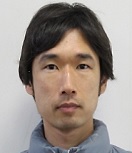
Takuya Hiroshima
Director
Ecohydrology Research Institute, The University of Tokyo Forests, Graduate School of Agricultural and Life Sciences
http://www.uf.a.u-tokyo.ac.jp/english/our_forests/ERI.html
The Ecohydrology Research Institute is one of the facilities collectively known as the “University of Tokyo Forests,” which belong to the Graduate School of Agricultural and Life Sciences. It used to be called the “University Forest in Aichi” but was renamed in 2011 to make a fresh start as a place for basic and applied research into the interactive relationships among forests, water, and human beings as well as a place for educating undergraduate and graduate students.
The Institute is situated amid the hills of eastern Owari in Aichi Prefecture. Because the Owari area has long been a production center for Japanese earthenware, a great number of trees in the local forests had been cut down to the roots to be used as firewood for making pottery. As a result, many of the forests were lost and the hills were rendered devoid of all plant life, leaving them as hageyama, or “bald hills.” Moreover, due to the geological features of the area, including the existence of weathered granite and sandy gravel layers, landslides from these “bald hills” into rivers and flooding in downstream zones subsequently increased. In response, the Aichi Prefectural Government asked the then-Tokyo Imperial University (presently the University of Tokyo) to come up with a reforestation plan for the bare hills.
Under these circumstances, Tokyo Imperial University acquired the land, a forest extending over about 1,300 hectares that had been owned by the Imperial family (presently a National Forest), in 1922. Naming the land the “University Forest in Aichi, Faculty of Agriculture,” the University’s initial aims for the land were to reforest the bare hills, observe the reforestation process over a long period of time, and collect scientific data throughout the course of these actions. The founding spirit of the forest facilities, which were established 94 years ago, has been passed down to the Ecohydrology Research Institute.
The Ecohydrology Research Institute is now mainly composed of the Goizuka Administration Office and Research Laboratory (one hectare), the Akazu Research Forest (745 hectares), and the Ananomiya Experimental Forest (77 hectares) in Seto City, along with the Inuyama Research Forest (443 hectares) in Inuyama City, Aichi Prefecture.
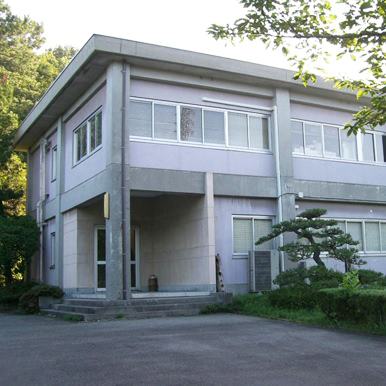 Goizuka Administration Office
Goizuka Administration Office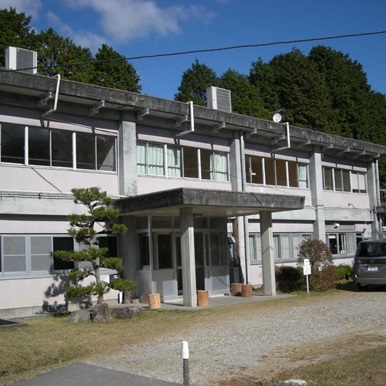 Akazu lodging facilities
Akazu lodging facilities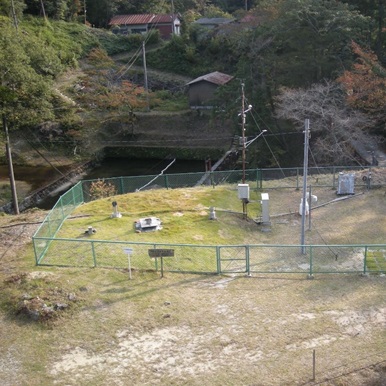 Shirasaka Meteorological Observation Station
Shirasaka Meteorological Observation Station
The Akazu Research Forest is situated in the suburbs. You can get there in 10 minutes by car from Owari Seto Station on Meitetsu’s Seto Line. The Forest’s lodging facilities (Photo 2) can accommodate up to 30 people and include lecture rooms. In front of these accommodation facilities is the Shirasaka Meteorological Observation Station (Photo 3), where precipitation, air temperature, soil temperature, humidity, wind velocity and other data have been recorded since 1929.
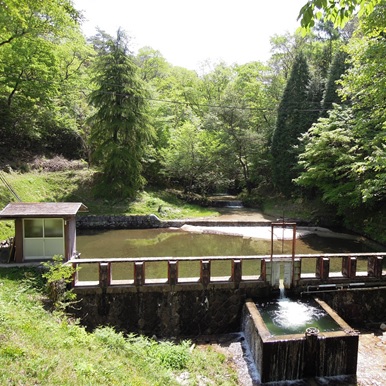 Shirasaka Flow Measuring Weir
Shirasaka Flow Measuring Weir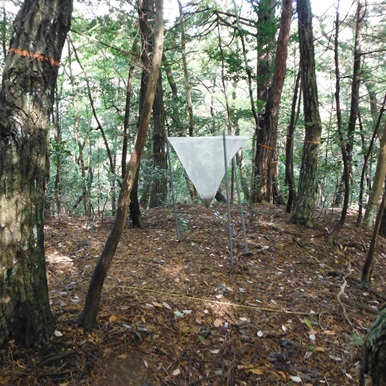 Shirasaka plot for long-term ecological research
Shirasaka plot for long-term ecological research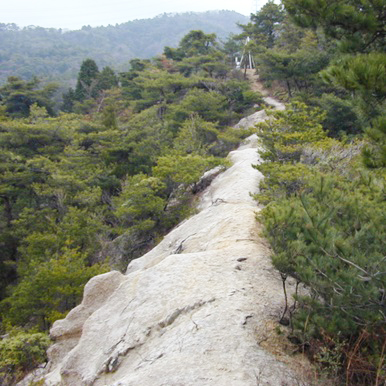 Ridge with exposed and weathered granite
Ridge with exposed and weathered granite
The Ananomiya Experimental Forest is 10 minutes from the Goizuka Administration Office by car, and has the oldest measuring weir of the Ecohydrology Research Institute (Photo 8), where outflows of water have been measured since 1925.
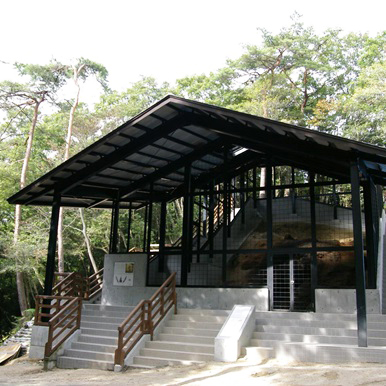 Remains of the Konagaso pottery kiln
Remains of the Konagaso pottery kiln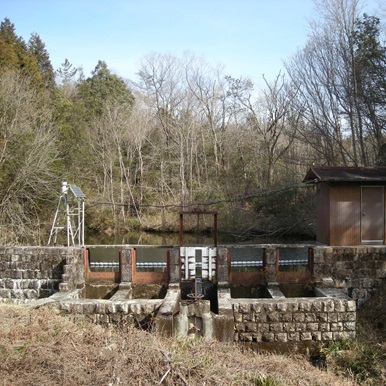 Ananomiya Flow Measuring Weir
Ananomiya Flow Measuring Weir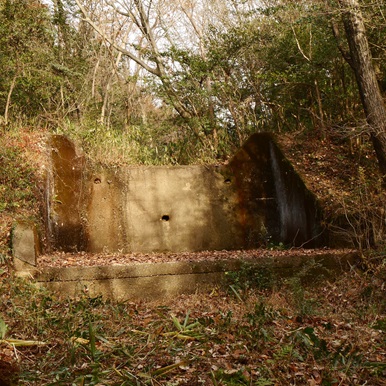 Earth dike (with a flood control channel made from concrete)
Earth dike (with a flood control channel made from concrete)
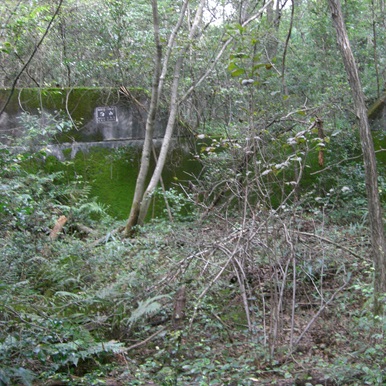 Concrete dike
Concrete dike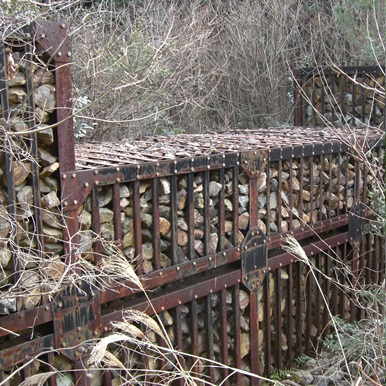 Flexible steel-framed dike
Flexible steel-framed dike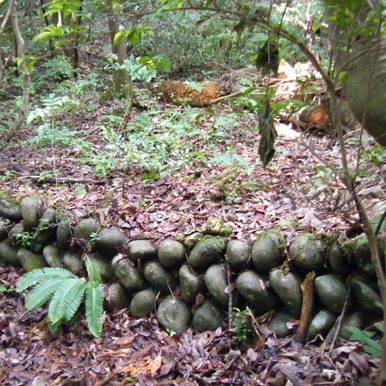 Tanidomeko work done using the river rock dry stack masonry method
Tanidomeko work done using the river rock dry stack masonry method
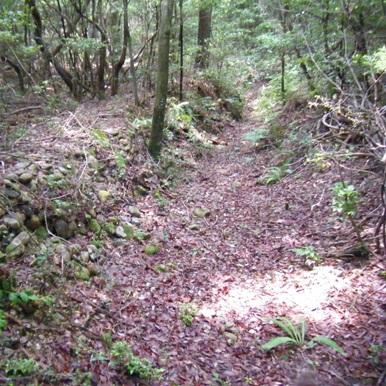 Remains of ryuroko work
Remains of ryuroko work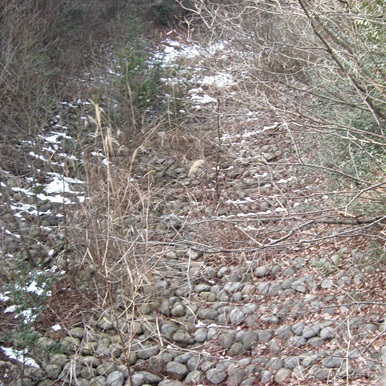 Tokogatameko work reinforced by wire gabions
Tokogatameko work reinforced by wire gabions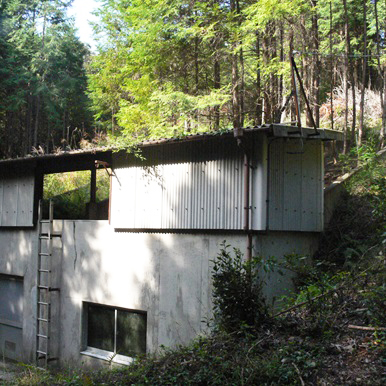 A lysimeter
A lysimeter
**This article was originally printed in Tansei 34 (Japanese language only). All information in this article is as of March 2017.






